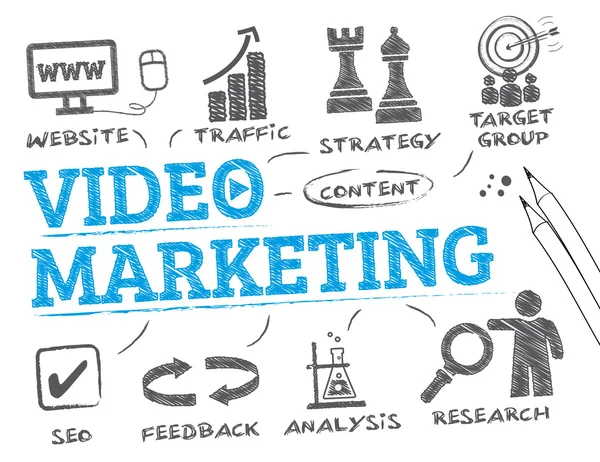
Introduction: The Power of Visual Storytelling
In today’s digital age, video has become the dominant medium for storytelling, communication, and engagement. With the rise of platforms like YouTube, TikTok, and Instagram, businesses have unprecedented opportunities to connect with their audience through compelling video content. In this guide, we’ll delve into the art of video marketing and explore strategies for creating captivating videos that resonate with your audience and drive results.
1. Understanding Video Marketing
Video marketing involves using videos to promote and market your products or services, engage with your audience, and build brand awareness. Unlike other forms of content, videos have the unique ability to convey emotions, tell stories, and capture attention in a way that text and images alone cannot. From product demonstrations and tutorials to brand stories and testimonials, video marketing offers endless possibilities for businesses to connect with their audience and drive engagement.
2. The Benefits of Video Marketing
Video marketing offers several compelling benefits for businesses:
- Increased Engagement: Videos are more engaging and memorable than text or static images, leading to higher levels of audience engagement and interaction.
- Improved Brand Awareness: Videos have the potential to reach a wider audience and increase brand visibility, helping businesses stand out in a crowded marketplace.
- Higher Conversion Rates: Videos can be highly persuasive and effective at driving conversions, whether it’s encouraging viewers to make a purchase, sign up for a newsletter, or download an app.
- Enhanced SEO: Video content can improve your website’s search engine optimization (SEO) by increasing dwell time, reducing bounce rates, and generating backlinks from other websites.
- Better Social Media Reach: Social media algorithms tend to prioritize video content, making it more likely to be seen and shared by your audience.
3. Types of Video Content
There are many different types of video content that businesses can create to engage with their audience:
- Product Demonstrations: Showcasing your products in action can help customers understand their features and benefits.
- How-To Guides and Tutorials: Providing valuable information and teaching viewers how to solve a problem or achieve a goal.
- Brand Stories and Testimonials: Sharing the story behind your brand and featuring satisfied customers sharing their experiences.
- Behind-the-Scenes Footage: Offering a glimpse into your company culture, processes, and day-to-day operations.
- Live Videos: Hosting live Q&A sessions, product launches, or behind-the-scenes tours to engage with your audience in real-time.
4. Tips for Creating Compelling Videos
Creating compelling videos requires careful planning, creativity, and attention to detail. Here are some tips to help you create videos that resonate with your audience:
- Know Your Audience: Understand your target audience’s demographics, interests, and preferences to create content that resonates with them.
- Tell a Story: Use storytelling techniques to create a narrative arc that captivates your audience and keeps them engaged from start to finish.
- Keep it Short and Sweet: Attention spans are short online, so keep your videos concise and focused on delivering value to your audience.
- Use High-Quality Production Values: Invest in high-quality equipment, lighting, and editing software to ensure that your videos look polished and professional.
- Be Authentic: Inject personality and authenticity into your videos to humanize your brand and make a genuine connection with your audience.
5. Promoting Your Videos
Creating great video content is only half the battle; you also need to promote and distribute it effectively to reach your target audience. Here are some strategies for promoting your videos:
- Share on Social Media: Share your videos on all of your social media channels, including Facebook, Instagram, Twitter, and LinkedIn.
- Optimize for SEO: Optimize your video titles, descriptions, and tags with relevant keywords to improve your search engine rankings.
- Collaborate with Influencers: Partner with influencers and content creators in your industry to reach new audiences and increase the visibility of your videos.
- Use Paid Advertising: Consider using paid advertising on platforms like YouTube, Facebook, and Instagram to reach a larger audience and drive more views.
6. Measuring Success
Measuring the success of your video marketing efforts is essential for optimizing your strategy and achieving your goals. Here are some key metrics to track:
- Views: The number of times your video has been viewed by users.
- Engagement: Metrics like likes, comments, shares, and click-through rates can help you gauge how engaged your audience is with your content.
- Conversions: Track how many viewers take a desired action after watching your video, such as making a purchase or signing up for your email list.
- Watch Time: The total amount of time users spend watching your videos can indicate how engaging and valuable your content is.
Conclusion: Lights, Camera, Action!
Video marketing offers businesses a powerful tool for connecting with their audience, telling their story, and driving results in today’s digital landscape. By understanding the benefits of video marketing, creating compelling content, promoting your videos effectively, and measuring success, businesses can harness the power of video to elevate their brand and achieve their marketing goals. So grab your camera, unleash your creativity, and let the magic of video marketing take your business to new heights!